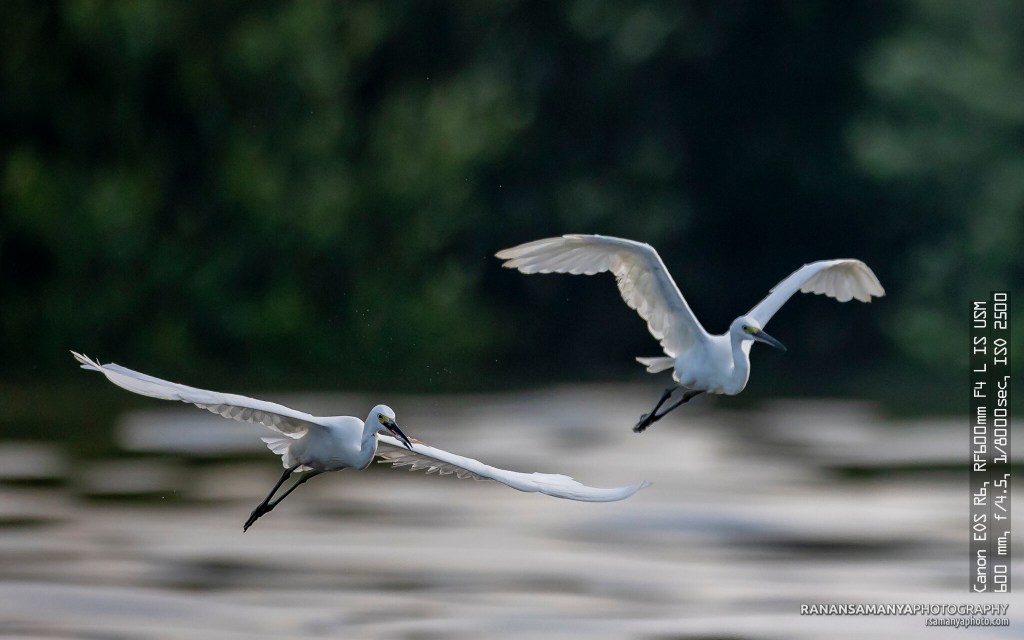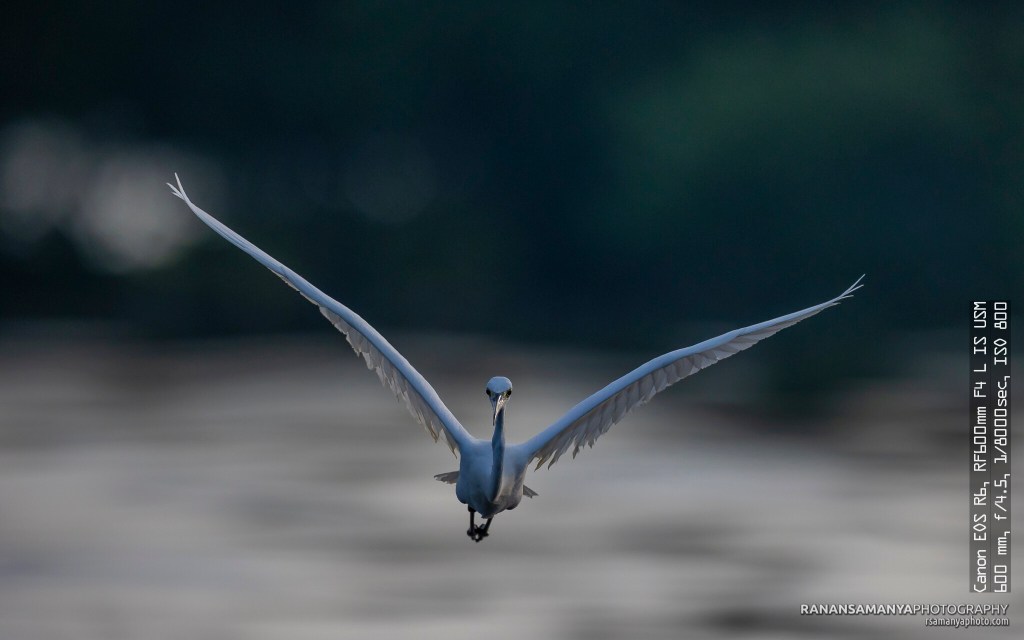of R5, R6, and two badass lenses RF 400mm and RF 600mm

I had the previlege of trying out two new Canon prime lenses, namely the RF 400mm f/2.8 L IS USM and RD 600mm f/4.0 L IS USM on two separate days, with thanks to Canon Indonesia, Focus Nusantara, and two Indonesian pro photographers and EOS Creators Indonesia Michael Sidharta, A.FPSI* (IG @mikesidartha) and Sambodo (IG @sambodo.msr). Below are my thoughts of them in relation to wildlife photography.
It’s been a very long time. I used to carry my then Canon EOS 7D (mark one, of course) and EF 70-200mm f/4 L IS USM, plunged into the shallow ocean to get close to the migrant birds. Those were 2010-2013. Here I am again, with the same excitement built up, 9 years later, with 9 years of technology and optical advancement. No splash on my camera or lens, no wet trousers, no burnt skin, no dried lips from the heat and salt water, as I was happily sitting inside a boat with a roof. This is neither a technical review of bodies nor lenses; just a short personal view on my feelings toward them.
First of all, the weight. At 2.9 kg of the RF 400mm and 3 kg of the RF 600mm, they are about triple the weight of my rather tiny EF 70-200mm f/4. Darn they’re even 1.8 times heavier than the weight of my heaviest lens, the EF 28-300mm L IS USM at 1.67kg. Somehow, though, they feel… pretty light. Light, if you are only holding them for a couple of minutes, that is. For those not familiar with lifting heavy lens, tremble may begin after 10-15 minutes, when holding and using them handheld. But if you train your muscles well, I believe this may not be an issue.
I used to zoom out when aiming with my 70-200mm, and then zoom in before I press the shutter. This way it’s easy to find my subject. Not now. At 400mm or even 600mm, prime lens, there was no way to zoom out. You just aim, focus and shoot, or aim and look around (grin). What I did was aiming when the birds were stationary, and keep tracking for the right moment before releasing the shutter button.

And boy that eye focus and focus tracking of animal feature on those EOS R5 and R6 bodies really really is a wonder. Can you believe that the bodies can focus on such a tiny litle object, from afar, and do a tack-sharp focus? Oh yes they do, although they may miss if the contrast is not good. But for the majority of the time, it was spot on. No, it was a quick spot on. Yes, the lenses are very quick to focus. Once you get the focus, keep the shutter button half pressed, and it will continue to track that same point of focus, even when the birds are moving away.

There were even times when I aimed while the birds were on flight, and the animal eye detection just did the work for me in a zip!

Did I do burst mode? Yes, but never on H+, which I think is a new high speed burst faster than H. not even on H mode, for two reasons only: the first and important reason is memory card. Especially on the R5, with its 45MP resolution, you will get your common 32Gb SD card filled within a few minutes of H+ burst mode. No I don’t have the luxury of unlimited cards at my disposal. The second reason is that I don’t want to spend time picking that one perfect moment in Lightroom from zillion of burst frames. And thus I used the L mode, and tried to use the wisdom of Yoda: use the force, Luke! And lo and behold, with that animal eye detection, I managed to get quite a number of keepers.
Thus in short, I feel that both the R5 and R6 are great tools for wildlife photography with their animal eye detection. Combined with either the RF 400mm f/2.8 L IS USM or the RF 600mm f/4.0 IS USM, they may be the best tools any wildlife photographers can get today, and I may be biased here (wink). Get the EOS R5 for extra ability to crop in much much much more than you usually do, for it has a maximum resolution of 45 megapixel. I have put a couple more samples of the RF 600mm here for you.
So do you need to purchase any of these lenses? Hell no! Not if you’re not a professional wildlife or sport photographer, with a paygrade that can cover the purchase cost of these lenses. If you are a seasoned wildlife photographer, try the rentals (not knowing how much the rental cost will be), try your photography community who may be able to get hold or borrow from a camera shop or from Canon, or else keep on dreaming (grin) and use other more affordable alternatives (or try to get as close as you can to your subjects).
Until then, thank you for dropping by and stay healthy!


You must be logged in to post a comment.